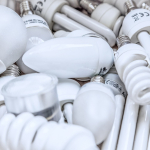Buying a home is one of the most significant financial decisions you’ll ever make, and saving for it requires careful planning and commitment. To start, understanding your budget and financial goals lays the foundation for your savings journey. Next, creating a structured savings plan will help you track your progress and stay motivated. Moreover, exploring various financing options can provide insights into what best suits your situation. By following this step-by-step approach, you can navigate the path to homeownership with confidence and achieve your dreams of owning a home.
Understanding Your Budget and Financial Goals

Before you embark on the journey of buying a home, it’s crucial to understand your budget and financial goals. This foundational step helps you set realistic expectations and tailor your savings strategy effectively.
Key Steps to Consider:
- Assess Your Current Financial Situation:
- List your income sources and monthly expenses.
- Calculate your net income to determine available funds for saving.
- Establish Your Home Buying Goals:
- Determine the type of home you desire (e.g., size, location).
- Decide on a reasonable timeline for purchasing your home.
- Set a Target Budget:
- Research average home prices in your desired area.
- Include additional costs such as property taxes, insurance, and maintenance.
- Create a Savings Target:
- Aim for a specific down payment percentage (typically 20%).
- Factor in closing costs and emergency funds for unexpected expenses.
Financial Goal Example:
| Goal | Amount Estimation |
|---|---|
| Home Price | $300,000 |
| Down Payment | $60,000 (20%) |
| Closing Costs | $9,000 (3%) |
| Total Savings | $69,000 |
A solid understanding of your budget and clear financial goals sets the stage for effective saving and successful home buying.
Creating a Savings Plan
Building a solid savings plan is essential for turning your homeownership dreams into a reality. Consider the following steps:
- Determine Your Target Amount: Establish how much money you need for a down payment based on the home prices in your desired area. Generally, aim for 10-20% of the home’s purchase price.
- Set a Timeline: Decide how long you want to save. For example:
- Short-term: 1-2 years for smaller amounts.
- Medium-term: 3-5 years for moderate savings.
- Long-term: 5+ years for larger homes.
- Choose Savings Methods:
- High-Interest Savings Accounts: Offers better interest rates than traditional accounts.
- Certificates of Deposit (CDs): Fixed interest for a specified term.
- Automated Savings: Set up automatic transfers to your savings account.
- Track Your Progress: Regularly assess your savings and adjust your plan as needed.
By following these steps, you’ll stay on course towards achieving your homeownership goals efficiently and effectively.
Exploring Financing Options
Once you have saved a sufficient amount for your home, the next step is to consider your financing options. Here are some popular choices to explore:
- Conventional Loans: These are not backed by the government and usually require a higher credit score. They offer flexibility with terms and conditions.
- FHA Loans: Backed by the Federal Housing Administration, these loans are ideal for first-time homebuyers, requiring a lower down payment and credit score.
- VA Loans: Available for veterans and active-duty military personnel, these loans require no down payment and have favorable terms.
- USDA Loans: Designed for rural homebuyers, these options require no down payment and are beneficial for low to moderate-income individuals.
Comparison Table
| Type of Loan | Down Payment | Credit Score | Eligibility |
|---|---|---|---|
| Conventional Loans | Usually 20% | 620+ | No restrictions |
| FHA Loans | As low as 3.5% | 580+ (preferably) | First-time buyers |
| VA Loans | 0% | No minimum | Military service members |
| USDA Loans | 0% | 640+ | Rural area residents |
Choosing the right financing option can significantly affect your long-term financial health, so assess your situation carefully and consult with a financial advisor if necessary.
Tips for Successful Home Buying
Purchasing a home can be an overwhelming experience, but with these essential tips, you can simplify the process and make informed decisions.
- Research the Market: Understand current trends, neighborhood values, and property types that suit your needs. A well-informed homebuyer stands a better chance of making a smart investment.
- Get Pre-Approved for a Mortgage: This gives you a clear idea of your budget and shows sellers you’re a serious buyer, which can strengthen your negotiating position.
- Engage a Professional: A knowledgeable real estate agent can provide valuable insights and streamline the buying process, helping you avoid common pitfalls.
- Be Realistic About Your Needs: Create a list of both essential and desirable features in a home. Prioritize them to help guide your search.
- Don’t Skip the Home Inspection: This crucial step can uncover hidden issues and save you from expensive repairs down the line.
By following these tips, you’ll be better equipped to navigate the home-buying process and secure the home of your dreams.
Frequently Asked Questions
What is the best way to start saving for a home?
The best way to start saving for a home is to establish a clear savings goal based on the amount needed for a down payment, closing costs, and other related expenses. Begin by creating a budget that includes a dedicated savings plan, identify areas where you can cut expenses, and set up a separate savings account specifically for your home fund. Automating your savings by setting up regular transfers can help maintain consistency and build your fund more effectively.
How much should I save for a down payment?
Typically, a down payment can range from 3% to 20% of the home’s purchase price. However, many financial experts recommend aiming for at least 20% to avoid private mortgage insurance (PMI). This means that for a $300,000 home, a 20% down payment would be $60,000. It’s also important to consider affordability and your financial situation; if a lower down payment is more feasible for you, various loan programs offer less stringent requirements.
Are there any government programs to assist with home buying?
Yes, there are several government programs designed to assist first-time home buyers. These can include FHA loans, which allow for lower down payments, USDA loans for rural homebuyers, and VA loans for veterans, which may require no down payment at all. Additionally, some states and localities offer down payment assistance programs that can provide funds or grants to help cover initial costs. It’s advisable to research available programs in your area and check eligibility requirements.
How long should I save before buying a home?
The time it takes to save for a home largely depends on your savings goal and financial situation. On average, it can take anywhere from 3 to 5 years to accumulate enough savings for a substantial down payment. However, this timeline can vary. Factors such as income level, expenses, discipline in saving, and the real estate market can all affect how quickly you can achieve your goal. It’s crucial to create a tailored savings plan that aligns with your target home price.














Comments are closed.